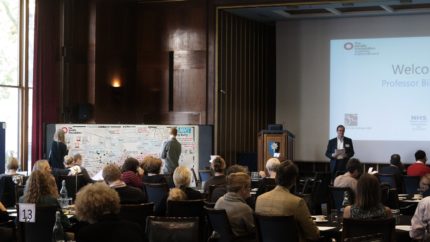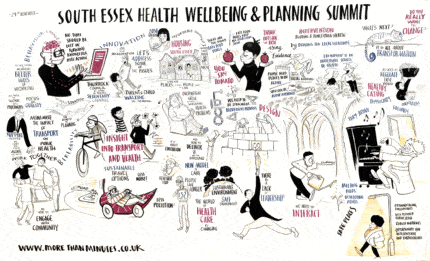I’ve gone on before here about the lost art of minuting.
This piece noted that universities are still full of committees and ensuring proper committee operations at all levels is actually a critical part of university management and governance. It requires a level of discipline and consistency which is part of the enduring infrastructure of a university and underpins the professional ethos of a university administration. If these basic formalities work properly then many other things follow.
A small but important part of ensuring effective governance is making the system work effectively and proper committee operations is central to this. Planning the programme of work, agenda-setting, ensuring proper information provision and recording decisions accurately are all essential to helping this system function properly.
Minute-writing is deeply unfashionable and possibly regarded by many administrators as a bit of a menial and tedious task.
Beyond all the terrible MS Word templates and similar which purport to offer an easy way to structure minutes there are other ways too to record proceedings which have become more popular.

Say what you see
In particular there are these ‘visual minutes’ which offer a very different way of recording proceedings. Here’s one company which provides such a service:
Visual Minutes are a live, illustrated record of conferences, events or meetings. It’s about listening and then visualising ideas in a dynamic way. The minutes unfold during the event and the information is brought to life with illustrations and colour. Visual minuting or graphic recording pulls out the key themes and messages making the information digestible.
Visual minutes are a way of making more of your meeting or conference. They give you a clear memorable record of what has been achieved and an engaging start to realising your ideas.
Studies have shown that we retain 10% of what we hear, 20% of what we read and up to 80% of what we see.

The argument therefore is that a visual record of an event is a better means of aiding retention of what was discussed than written minutes. And there are other benefits too:
Many of our clients keep the visual minutes in their offices as a resource to remind them of their vision. We can also provide a digital image which could be chopped up and used as part of reports, presentations, publications or as a tool for pitching.
Colour visuals increase willingness to read by 80% and can positively affect motivation and participation
We’ve all been to meetings and conferences that seem to lose all clarity as the day goes on. Having an illustrator capturing the event gives a clear reference of how the group are thinking and what has been discussed that day. It’s all up there on the wall for people to see.
I’m not sure how easy these things are to distribute with the papers for the next meeting and suspect they are really aiming at the conference market rather than meetings of your Audit and Risk Committee.
Odes of joy
But it’s not just visual records on offer, there are also poets for hire who will offer unusual records of your events too:
Does your conference need something different to inspire delegates, set the mood of the day or send them home smiling? Would you like to book an after dinner speaker with a difference for your gala dinner?
I am an experienced performance poet and love using my skills to entertain, inform, inspire and challenge as a conference poet and after dinner speaker. I can work in different ways, performing poetry from my collections, writing and performing poems on the theme of your conference or meeting, or reflecting conference events, themes or topics of discussion. I can meet and interview you or your colleagues in advance in order to reflect your industry, your company or topical themes.
Again this is really more of a conference twist rather than a means of recording decisions made by the car parking committee but an entertaining approach nevertheless.
Typically po-faced conclusion
Good minute-writing does still appear to be a dying art and will mean that universities will be less effective places as a result. Entertaining though these pictures and poems are they really are no substitute for proper minuting.














Having read minutes clearly edited to reflect certain individuals need to control information, it’s not just a lost art, it’s often a deliberate act of obfuscation that’s interfering with the process. And when the chair unilaterally bans any form of assistive recording device to help with making accurate individual contemporaneous meeting notes you know honesty and transparency come a poor second and third to ‘business needs’… Or simply lying by omission.
Minutes are only an end point of a long process. A good committee secretary should be able to write (most of) the minutes before the meeting even starts, based on the chair’s briefing.
I agree with David, though I also think that he quality of minute writing has been impacted both by a reluctance to recognise the purpose of minutes (then with untrained, often very junior staff creating poorly written and unclear records of what was discussed and agreed, which often makes it very difficult for anyone to take forward what was agreed), as the author infers, and by the confusion of governance and management, as per N’s comment. In my experience, the latter often results in Chairs who don’t see the value in committees removing the value from committees (with the minutes duly becoming one more manifestation of their divine truth and will, which means that the secretary can write *all of* the minutes before the meeting even starts, based on the briefing given by the Chair).
As both a historian by training and someone who started their career as a committee secretary in local government, I am saddened by the decline in good minute-writing.
https://www.quotes.net/mquote/956807
Amen to this. Minuting suffers from the conflation of “aim” and “purpose” – good minutes should actually be a fundamental part of the decision making process and record keeping, but they are not the aim in themselves. A healthy balance is to be found somewhere!